Earlier this week I was invited to an event at Citizen Watch’s Flagship store in New York’s Times Square. The event was an unveiling of Citizen’s newest timepieces, the Satellite Wave-World Time GPS and the Satellite Wave F900. Both watches use GPS to set the date and time. Citizen claims these are the most accurate watches on Earth.
The theme of the event was “Time, Space, and Innovation”. Citizen invited several guest speakers who simultaneously educated and entertained.
The first speaker, Physics Professor Brian Greene of Columbia University, spoke about Einstein and the Theory of Relativity. Professor Greene explained that space and time are woven together, and that time does not pass at the same rate for everyone or everything. He stated that as an object’s velocity increases, the rate at which time passes decreases. Additionally, Professor Greene informed us that time runs slower as gravitational forces increase.
This might seem out of place for the unveiling of a watch; however, Professor Greene explained Relativity is a significant component in the use of GPS. You see, GPS satellites circle the Earth at approximately 8,700 mph and orbit at an altitude of about 12,550 miles. As we now know from the Theory of Relativity, speed and gravity both affect the rate at which time passes. In order for the GPS clock to be accurate, it is required to calculate these effects of Relativity; otherwise, it would become wildly inaccurate in a matter of days.
Our next speaker was Professor Oded Aharonson of the Weizman Institute of Science. Professor Aharonson spoke of the importance of precision timekeeping in space exploration.
For example, to map the topography of Mars, NASA used the Mars Orbiter Laser Altimeter, a device which transmitted lasers to the Martian surface and measured their flight time to determine the distance they traveled. If the device wasn’t able to make precise measurements of time, the distances calculated could be off by inches, feet, or even miles.
Then, through a series of PowerPoint slides, Professor Aharonson illustrated just how remarkable Citizen’s newest watches were. As you can see in the photo above, your average watch loses accuracy at a rate of approximately 5 seconds a day; while one of Citizen’s previous Satellite models loses accuracy at a rate of approximately 5 seconds a month. The Satellite Wave-World Time GPS and F900 only lose accuracy at an astonishing 1/20th of a second a day. That’s more accurate than the Mars Orbiter Laser Altimeter.
After the Professors spoke, we welcomed Artist Michael Benson, who displayed works from his “Otherworlds: Visions of Our Solar System” collection. Mr. Benson uses satellite imagery to create astounding works of art. His newest collection will open in 2016 at the Natural History Museum of London.
The final guest was Michelle Baird, a senior in the Bergen County Technical school. Ms. Baird was being honored as a “Science Star of the Future” by Citizen Watch and the New Jersey Center for Teaching and Learning.
With all due to respect to the other guests, Ms. Baird may have been the most impressive guest of the night. Although only seventeen years old and a high school senior, she has already began college courses, and helped create the test for one of her advanced placement courses. In recognition of her abilities and drive, she was given a Citizen Women’s World Time AT watch and signed copies of each Professor’s book.
Of course the true purpose of the night’s event was to showcase the newest additions to the Citizen lineup, the Satellite Wave-World Time GPS and the Satellite Wave F900.
These watches are remarkable devices, both being able to sync to a GPS signal – in any of the forty time zones – within three seconds. They are powered by Citizen’s Eco-Drive technology which converts any light source into power. When fully charged, the watch can function up to seven years without recharging.
The comedian Louis C.K. has a hilarious – hilarious, yet expletive laced – act where he accuses society of not appreciating the technology we have available to us. He mocks someone for complaining about their cell phone and says, “the [worst] cell phone in the world is a miracle.” I bring this up because after hearing the guests speak, the more I was in awe of what Citizen was able to do with these watches.
Generally, a watch may not fill you with a sense of awe; however, consider what these timepieces are actually doing. They convert light into energy, use that energy to communicate with satellites over 12,000 miles away, then automatically set the date and time. They will then function for the next 7 years without a charge. It’s an astounding process for a device that lives on your wrist.
Citizen put together quite an event; it took the beauty, science, and sophistication of space exploration and paralleled it with everything Citizen represents. Citizen’s motto, Better Starts Now, is obvious in the quality of their work, but I think it is more than a reflection of their product. By advancing technology and helping to cultivate young minds, Better Starts Now is a vision for the future.
For more information on any of Citizen’s products, please visit their website.

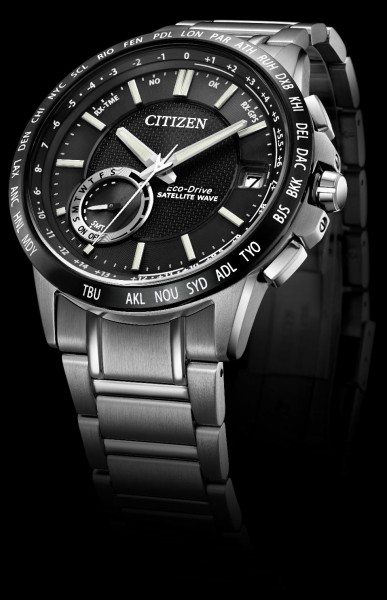
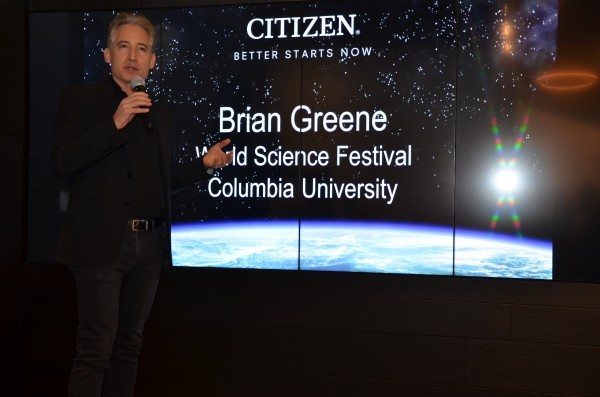
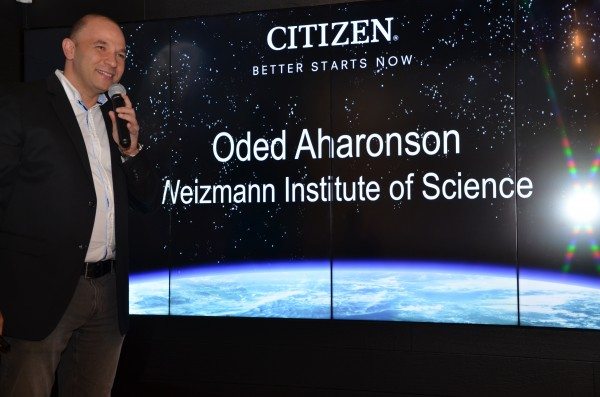
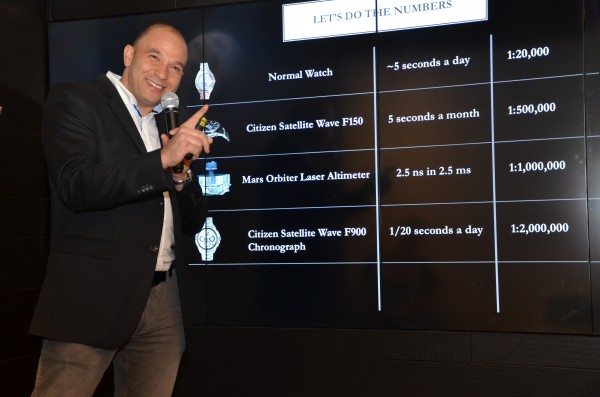

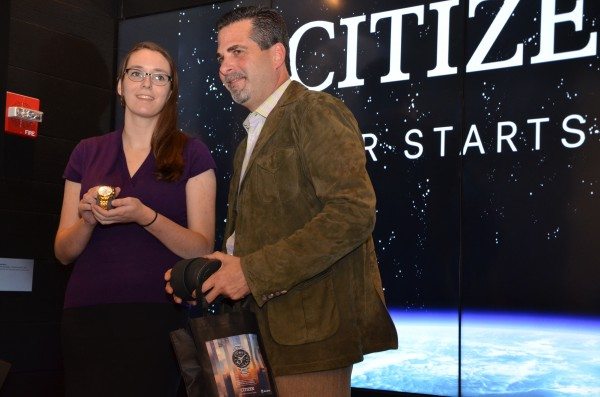
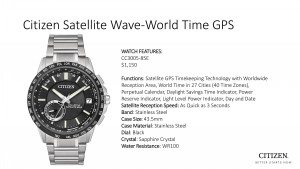
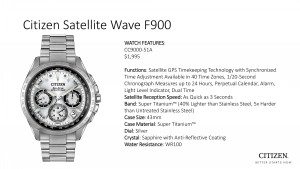
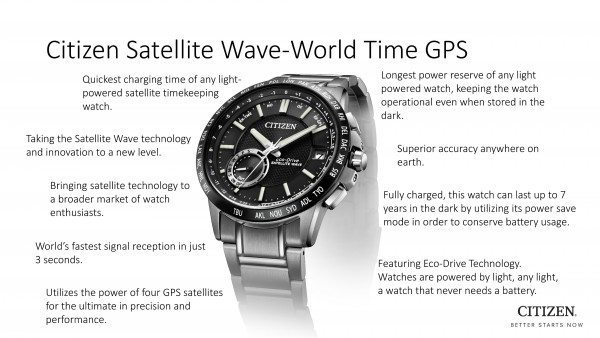


Gadgeteer Comment Policy - Please read before commenting
Certainly the technology put into this new device is incredible. But, really, to what end? So you will be on time to your next meeting within 0.0001sec accuracy? With the possible exception of the physicists attending, nobody needs such accuracy in their daily lives!
So the technological achievements in this watch are really just a gimmick. I suggest Citizen partner with Apple and put their battery/solar/kinetic/GPS tech to more useful uses.
I agree that being able to be accurate to the nth degree is probably a gimmick, but lots of things we use everyday started out as gimmicks. I had one of the first camera phones and a lot of my friends thought it was a stupid gimmick; now we all have camera’s on our phones that rival DSLR’s. Plus to a watch enthusiast this may be the greatest thing ever.
So this new watch is one-tenth of a second per DAY (on average) more accurate than Citizen’s previous Satellite models. What a beat up.
I believe it’s more than a 1/10th of a second a day more accurate. The previous watch lost 5 seconds a month or 1/6 of a second a day; while it would take the new watch over 3 months (100 days @ 1/20th of second) to lose 5 seconds.
Per day (they use days and months to disguise reality), old 0.16 secs, new 0.05 secs per day so difference is 0.10 (in-tenth) seconds per day.